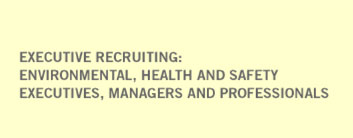
THE MYTH OF THE PERFECT CANDIDATE
The Unemployment Paradox
Viable Candidates Are Often Passed Up
Limited Talent Pool
Search Consultants statistics show that for any available candidate pool, only 10% to 13% of the people in that pool will possess the qualifications requested. From that reduced pool, only 5% to 10% will be seriously interested in making a move at the point in time you are seeking them.
If a chemical company is searching for a environmental manager for one of its plants, for example, a reasonable candidate pool might come from other chemical and related manufacturing plants in several surrounding states. If there are 900 chemical plants of similar size in the target area, there should be approximately 900 potential environmental managers. However, of these 900 candidates, only 10% to 13% will possess the qualifications that the company seeks.
So the real available candidate pool is not 900, but more like 105. Of the remaining 105, only 5 to 10%, or 8 to 10 candidates, will be seriously interested in making a change at any given time. It doesn’t matter what other dynamics currently exist. The fact is, in a market of this size, there are only about 8 to 10 qualified and interested candidates who can be attracted to your position at any given point in time.
A Sense Of Urgency Is Crucial
However, in most situations, this should be more than sufficient to give your management a choice of at least two candidates who share your corporate vision and possess the intangibles you seek.
Will your selection be a ‘perfect candidate’? Perhaps not, but if your search process follows a planned professional approach, they should be the best qualified candidate available, and you should be able to arrive at that decision in a reasonable time period, while the candidate is still available.
A sense of urgency on the decision maker’s part is crucial to take advantage of candidates’ availability.
Just as critical is a disciplined recruiting process. Check out SearchEdge™, our proven recruiting strategy.

